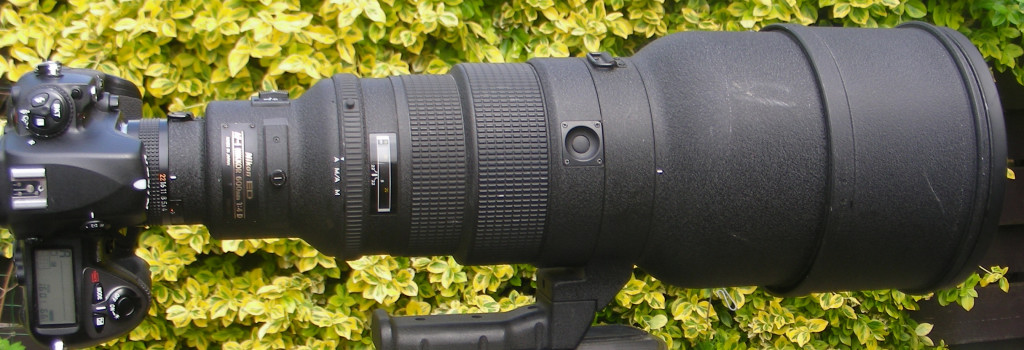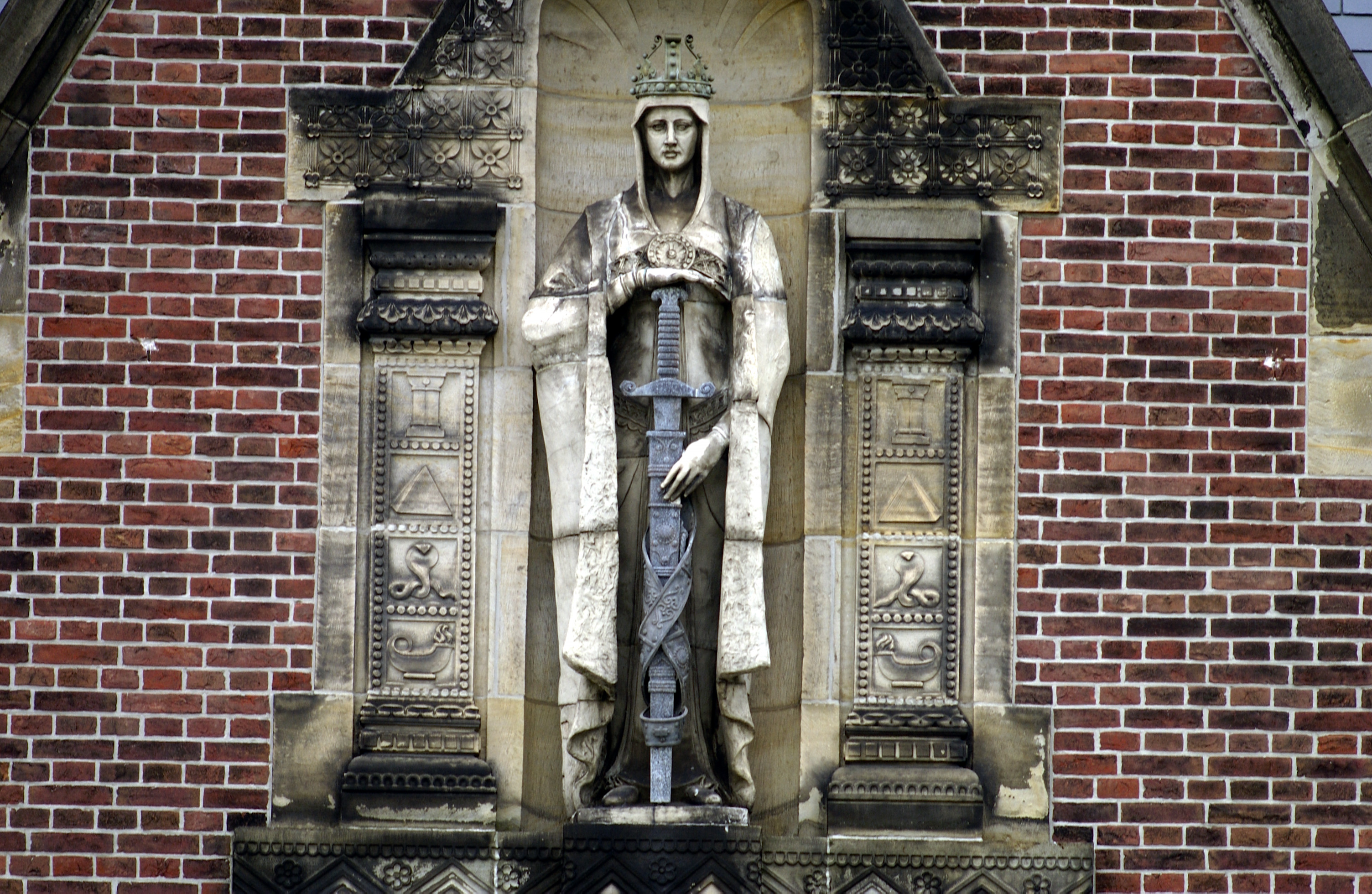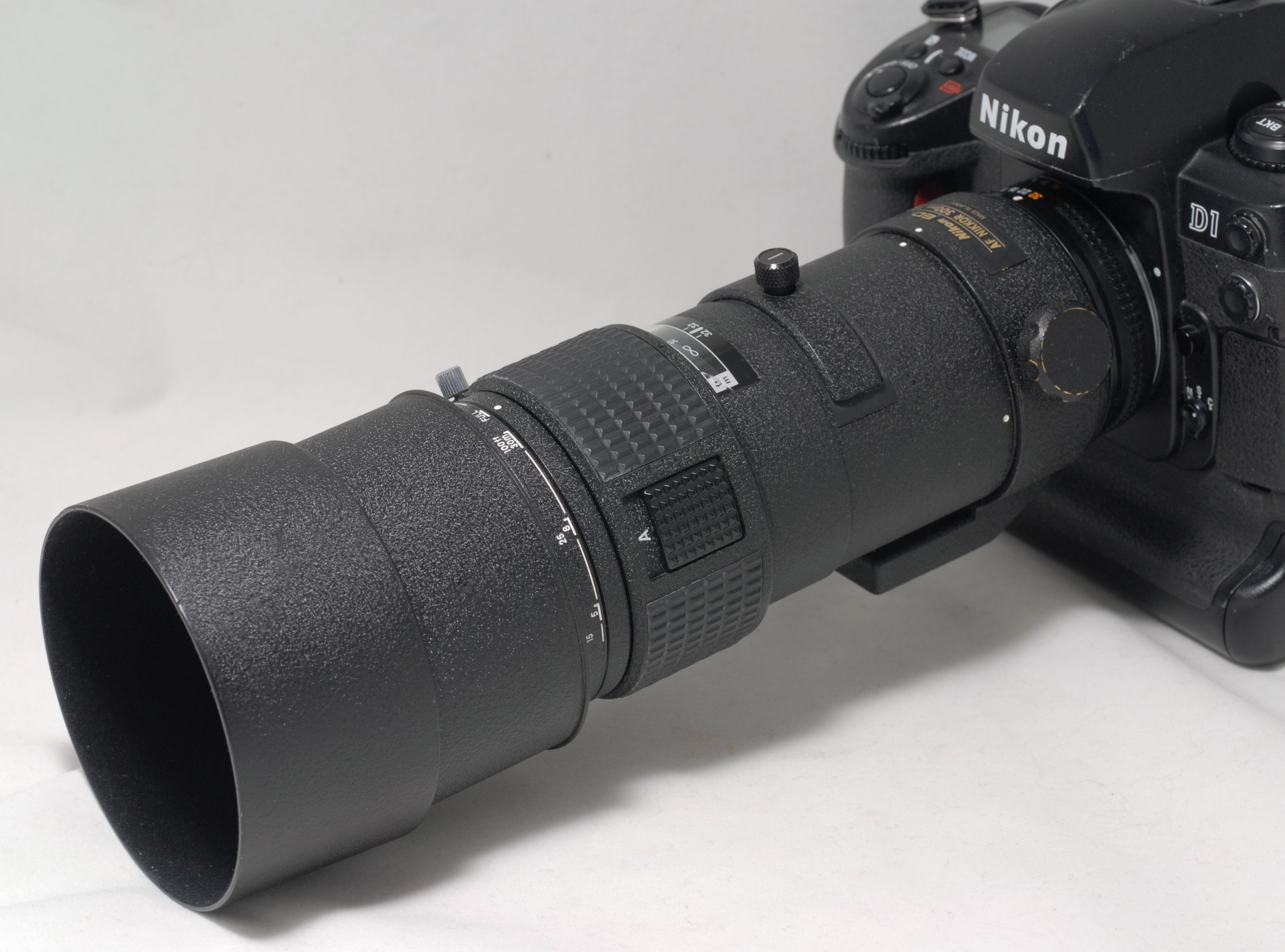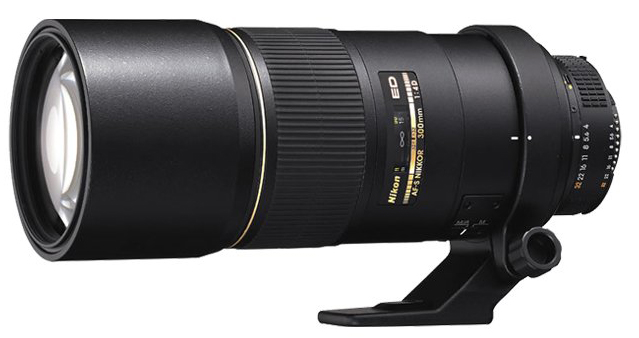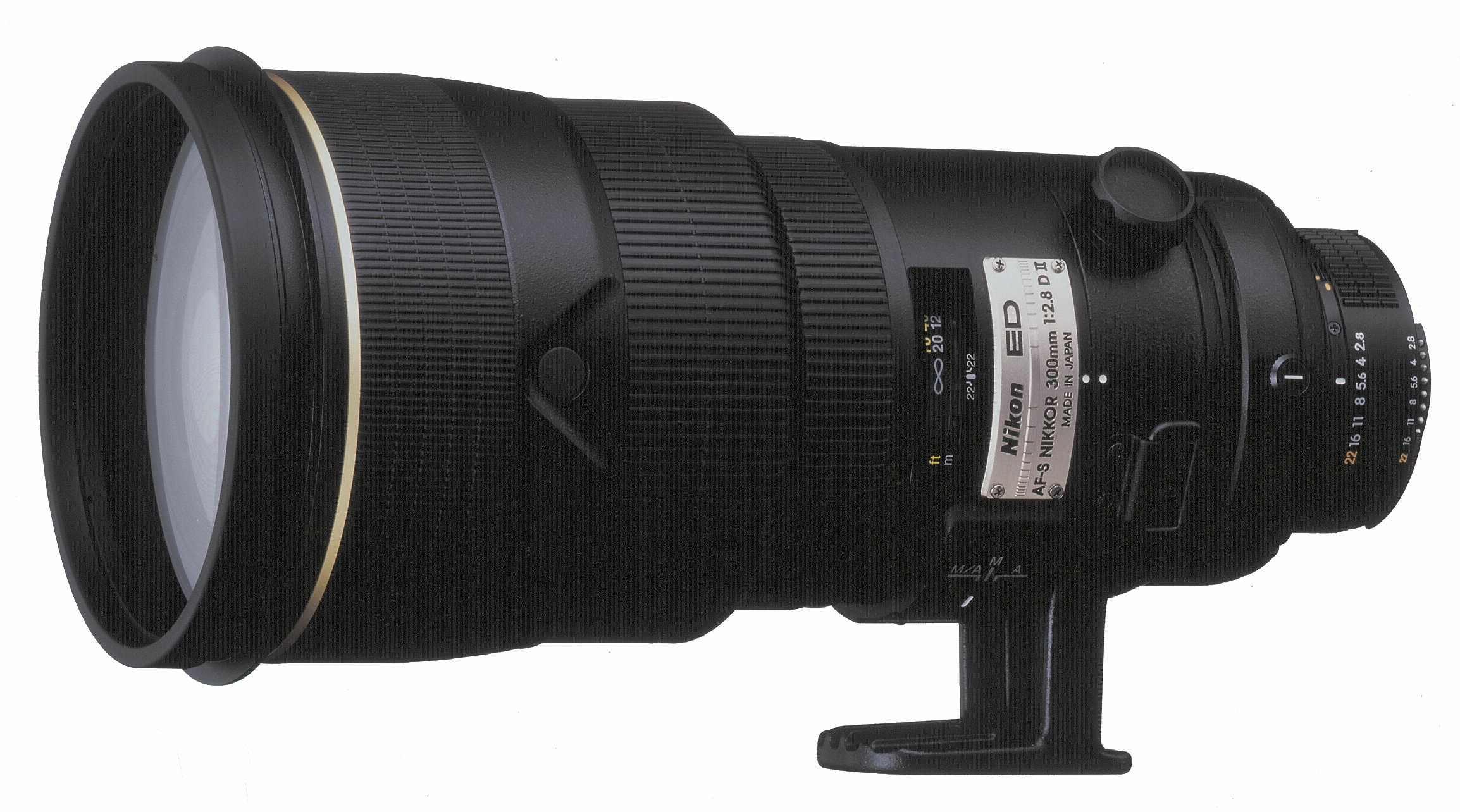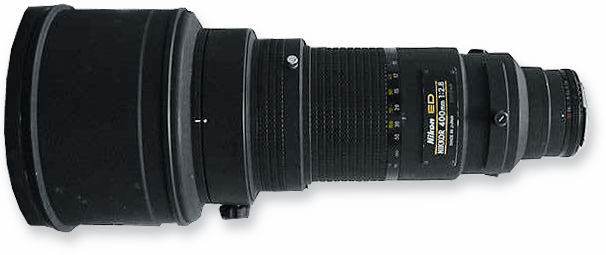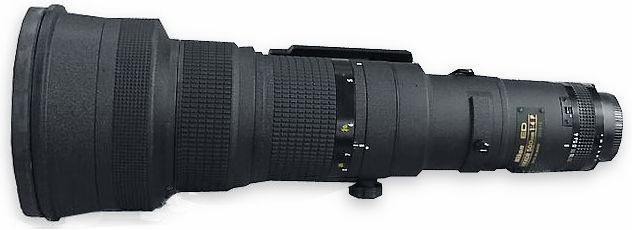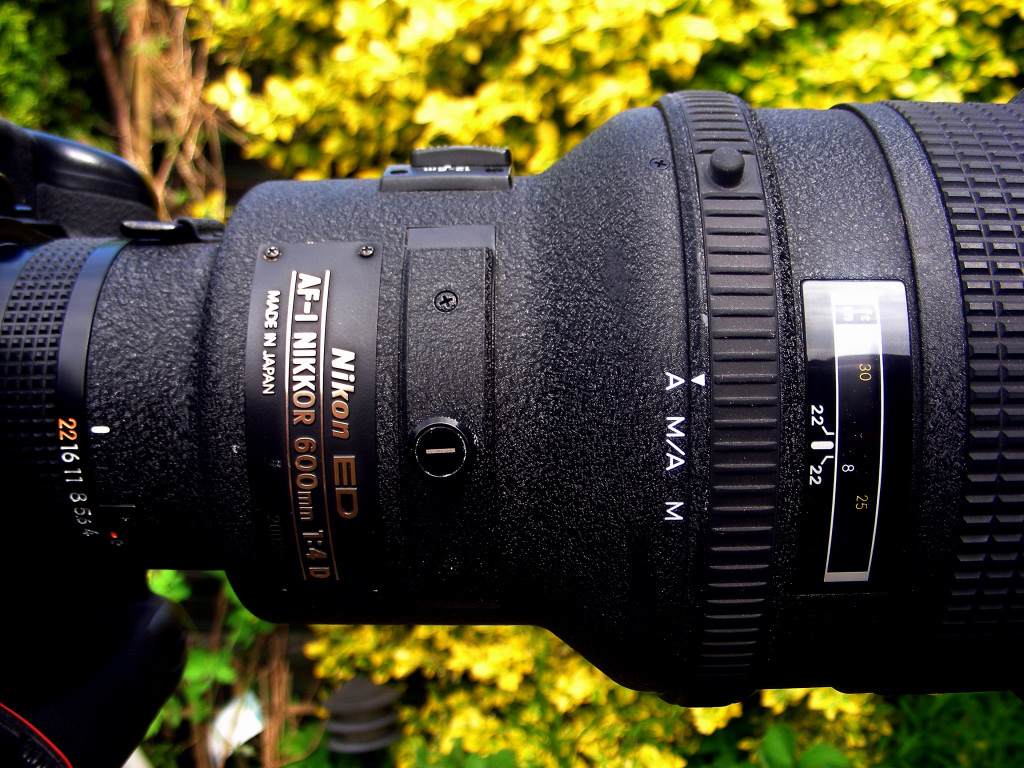Nikkor autofocus long tele-lenses
AF-I 600mm/4 D IF-ED: respected member of 'Nikon's stovepipe department'
For technical specifications see this matrix.
In the 1980´s Nikon introduced auto focus varieties of the famous and popular manual long tele-lenses. Because of the auto focus system and internal focusing feature optical constructions had to be modified or re-designed. It gave Nikon also the opportunity to make use of new glasses, especially the ED-glass, which has been developed by Nikon itself. ED = extra low dispersion, referring to the capability of certain lens elements to break visible light beams (with different wave lengths) in a way that they are projected at the same spot on the film or sensor plane. This feature will eliminate color fringing, chromatic aberration and will increase sharpness. In some lenses Super ED-glass is used for an optimum in eliminating aberrations. A new feature is the use of nano-crystal coating (mainly on the camera-side) of some lens elements. This eliminates ghosting and flare in fast tele-lenses. All these innovations resulted in beautiful and razor sharp tele-lenses, usable at full opening. In many comparative tests the Nikkors, reviewed below, are scoring very high. Lab resolution tests are stating that some lenses of other brands do have a few lines per millimeter more but are incommensurable with the final image Nikkor tele-lenses deliver. See yourself below.
Peace Palace in The Hague (NL), seat of the International Court of Justice, pictured with a standard lens
above the main entrance of the Court you'll find this statue; only visible if you use a 600mm. at a DX-camera, making it a 900mm.!
AF-Nikkor 4/300 mm.
AF-Nikkor 4/300 mm. IF-ED The first version of this compact tele-lens (see above) was introduced in 1987. It already featured internal focus and its optical construction of 8 elements (of which 2 elements - no. 2 and 7 seen from front - made of ED-glass) in 6 groups guarantees high resolution and high contrast. This very popular lens has a production run of more than 14 years!!
In 2001 a new design (AF-S) was presented (see above). This version has a built-in auto focus motor (Silent Wave Motor) for faster focusing (down to 1.45 meter in stead of 2.5 meter of the first version), an optical construction of 10 elements (2 of ED-glass) in 6 groups and is featuring a built-in chip for data transfer. Both lenses have a built-in hood, a tripod collar and are weighing in at 1300 gram. Among the lenses reviewed in this chapter these lenses are the lightest and cheapest lenses, but in now way inferior to the others.
AF-Nikkor 2.8/300 mm.
In September 1986 the auto focus version of this very popular lens was introduced. It has an optical construction of 8 elements (no. 2 and 3 are of ED-glass) in 6 groups, internal focusing and a built-in hood. Two years later a new version with identical specifications was presented, followed - in 1992 - by an AF-I version with a built-in motor. This made a re-design of the optical construction necessary: 11 elements (of which 3 of ED-glass) in 9 groups. In 1996 an - again improved - version (AF-S) was introduced with the same optical construction, but with a faster Silent Wave Motor and a shorter minimum focusing distance (2.5 meter in stead of 3 meter). The last version (AF-S ED-IF II, see above) was introduced in 2001. In 2005 Nikon introduced the VR-version (VR = vibration reduction) of this lens. For the review of that lens please see the relevant chapter. All AF-versions of the 2.8/300mm are high end lenses, wanted by many photographers, resulting in high prices on the secondhand market. If you find one check the front lens and internal dust carefully and see if the focusing speed is OK.
AF-Nikkor 2.8/400 mm.
In Summer 1994 the first AF-version (AF-I) of this wonderful lens was presented. It is a total new design. The manual version has 8 elements in 6 groups, but the internal focusing (IF) feature made it necessary to use 10 elements in 7 groups. The later AF-S version - introduced in 1998 - has 11 elements in 9 groups and a Silent Wave Motor. The body is made of artificial resin with carbon fiber bringing down its weight from 6.3 kilo to 4.8 kilo! A third version was introduced in 2001. Nikon succeeded to slim it down to 4.4 kilo by using a magnesium alloy this time. This last version also features data transfer. The successor of this series of razor sharp lenses is the VR-version, which is reviewed in the relevant chapter.
AF-Nikkor 4/500 mm.
In 1994 this relatively light (4.2 kilo) but very fast tele-lens was introduced. It has an optical construction of 9 elements in 7 groups, which differs considerably from its manual predecessor (8 elements in 6 groups). In 1997 a newer version with 11 elements (3 x ED) in 9 groups and a Silent Wave Motor is presented. This version lost some 400 grams in weight and can be focused down to 5 meter. The last version - without vibration reduction - was introduced in 2001. The body is made of a magnesium alloy, resulting in a weight of 3.4 kilo. All versions are razor sharp lenses; main differences are the weight and the focusing speed.
AF-Nikkor 4/600 mm.
This ´stovepipe´ was introduced in 1992 as the AF-version of the manual tele-cannon which was born in the early 1980´s. The first AF-I version with a built-in focusing motor (see above), weighing in at 6 kilo, has an optical construction of 9 elements (3 x ED) in 7 groups. In 1996 an AF-S version - with a built-in Silent Wave Motor and a re-designed optical construction (10 elements (3 x ED) in 7 groups) was replacing the AF-I. The second AF-S version - introduced in 2001 - has the same optical construction, but lost 2.2 kilo (!) in weight. This ´600´ has also been replaced by a VR-version.
|
